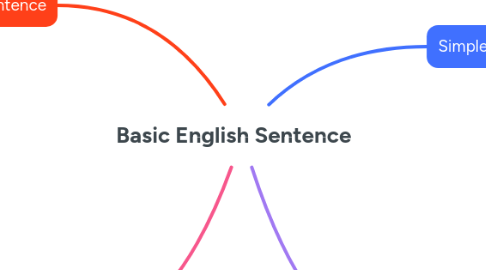
1. Complex Sentence
1.1. Complex sentence has an independence clause with one or more dependent clauses. Note: that introductory dependent clauses must be followed by commas.
1.1.1. Characteristic dependent clauses -it is introduce by sub ordinating conjunction -the signal word are if, when, because, before, after, so that, although, since, and etc.
1.1.1.1. Examples:
1.1.1.1.1. Since we got to the concert late, we have to make our way to our sits in the dark.
1.1.1.1.2. We left class early so that we could attend a special lecture.
1.2. Compleks sentence should be punctuated in one of two ways: - independent clause dependent clause (no comma) We left class early so that we got attend a special lecture - dependent clause, independent clause (comma) so that we could attend a special lecture, we left class early.
2. Compound-Complex Sentence
2.1. A compound-complex sentence comprises at least one independent clause and two or more dependent clauses.
2.1.1. Example:
2.1.1.1. Although I like to go swimming (dependent), I haven't had the time to go lately (independent), and I haven't found to go with (independent).
2.1.1.2. I want to stay at home (independent) and I don’t want to go anywhere (independent) because it is raining (dependent).
3. Simple Sentence
3.1. A simple has one independent clause and no dependent clause.
3.1.1. Pattern of Simple Sentence
3.1.2. S+V (The baby cried)
3.1.3. S+V+O (James plays the guitar)
3.1.4. S+V+O+A (He eats rice with silver spoon)
3.1.5. S+V+A (John, Lia, and Sam were typing carefully)
3.2. A simple sentence contains only one independent clause, but it can more than one subject or verb.
3.2.1. Two subject: The student and his friend writing.
3.2.2. Two verbs: The student writing and singing.
4. Compound Sentence
4.1. Compound sentence has two or more independent clauses that are usually joined by a coordinating conjunction.
4.1.1. Most compound sentences are formed with co-ordinating conjunction: For, And, Not, But, Or, Yet, So (FANBOYS).
4.1.1.1. Examples:
4.1.1.1.1. Same got a new job, so he has to move.
4.1.1.1.2. I have a lot of homework, but I'm not going to have time to study tonight.
